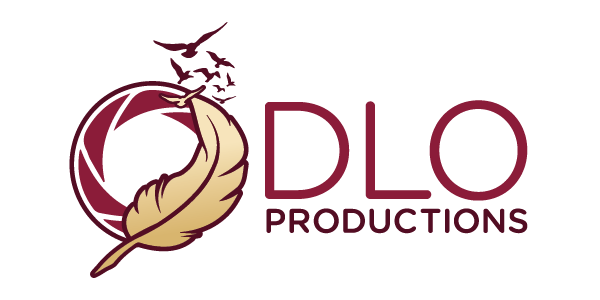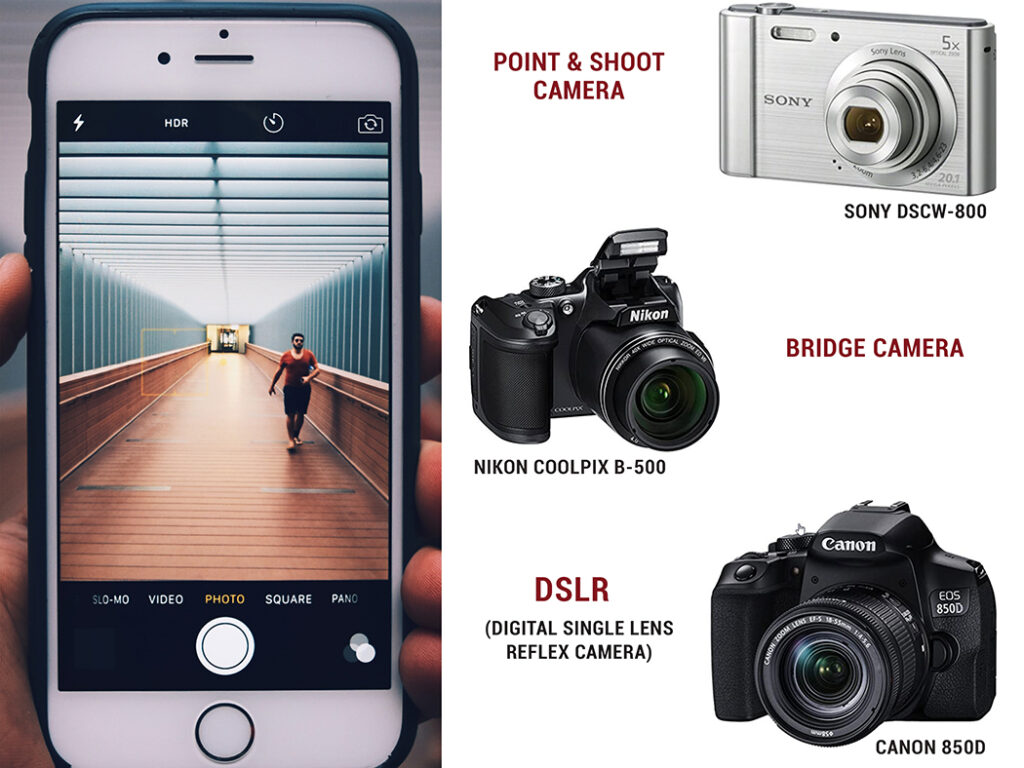Whether you’re entirely new to seeing the world through the eye of a camera, or you have some basic skills under your belt and want to lean into getting off auto mode and into taking more creative control by learning to shoot in manual mode — there are four types of cameras to consider as you begin your photographic journey.
MOBILE PHONE
Pretty much all cell phones come with cameras these days. High-end phones come with higher resolution and a pretty good lens.
Price ranges from free (with certain contracts) to well over $1000.
Shop around and don’t be afraid to do a Google search or call the store to find out if they are offering any incentives/coupons to help take the sting out of investing in some of the things on your photography wish list.
I never pay full price for anything. I’ve even gotten discounts by contacting the seller and asking for their best price. If they have nothing to offer when I call, I just ask them to email me when they have a special, which often results in my getting a call or email with an incentive to turn my ‘maybe’ into a ‘yes!’
I still use the iPhone SE. I will travel more in the future, so I am actively looking for a deal to upgrade to the iPhone 13. I also want to purchase an Apple Watch as a bit of an insurance policy if I’m out exploring and something unexpected happens (like the guy who fell off a cliff and his Apple watch made it possible for him to be found and saved – that made the upgrade something I definitely could justify as a business expense).
I wrote a quick post on why an iPhone upgrade and Apple Watch jumped from my business ‘wish list’ to a ‘must-have’ investment.
For now, let’s go over some pros and cons of taking pictures with a mobile phone:
- Pros
- Convenience—you have it with you, and that can come in handy when you come across something unexpected that you simply must capture.
- You can also use it to take reference photos if you want to return them later (I do this when I see backgrounds I think would look awesome in senior portraits or modeling shots).
- Cons
- The image quality depends on the phone’s make/model. Less expensive models may be okay for shooting reference photos but not for creating images worthy of enlargement.
- Some cell phones don’t do well in low light
- Some models may not have a lot of features or options helpful to photographers.
POINT AND SHOOT CAMERAS
- PROS
- Compact, convenient, and easy to use
- Some are small enough to fit in your pocket or purse, so a great little carry-around camera
- Less expensive than a DSLR
- Many have excellent features like face detection, image stabilization, and the ability to zoom in and take close-up pictures (macro option)
- CONS
- Quality may not be as good with less expensive models (see my upcoming post on how many megapixels you need when considering a camera purchase – more is not always necessary. Choices should be made – megapixel-wise — based on what you are shooting and what you plan to do with the images (enlargements).
- It may not work well in low light, but it may have a flash
- It may not have interchangeable lenses. Consider a camera with optical zoom. You’ll appreciate the expanded range and options when shooting.
PRICE RANGE: Some kid cameras run less than $100 and are an excellent way to introduce little ones to the wonders of photography.
Higher-end models can run close to $1000 new, depending on the features, options, model, etc.
TIP: Consider getting a bit older model or a used/refurbished camera – I have a Canon G5X that I carry around. It fits in my purse, has a quality lens, and has a nice set of options, including the ability to record decent video footage. It also shoots 20-megapixel images. What’s not to love about that?
It originally retailed around $800 (if I remember right), and I got it refurbished for a little over $400. I LOVE this little camera, and by staying a model or two behind the latest and greatest, I was able to get a great little carry-around camera for way less than the newer models are running as of this post. I do loves me a good deal!
BRIDGE CAMERAS — ‘bridge’ the gap between point-and-shoot cameras and DSLRs.
PRICE RANGE: $150 give/take to several hundred dollars, depending on make, model, and features.
PROS
- Higher quality images from a bridge camera over point and shoot.
- Often has similar manual control/options as a DSLR.
- Generally comes with a powerful optical zoom with an excellent range (wide-angle to telephoto).
CONS
- Quality is not as good as with a DSLR
- May not be able to change lenses
- Less portable than point-and-shoot or cell phone.
DSLR CAMERA — (digital single-lens reflex camera)
PRICE RANGE: Depends on camera sophistication and quality — and whether you are buying new or used. To get an idea of what to expect to pay for the most common types of DSLR:
- Entry-Level DSLR
- New: $350 – $800 (give/take)
- Used: $100 – $300 (give/take)
- Prosumer DSLR
- New: $1000 – $3000 (give/take)
- Used: $300 – $1500 (give/take)
- Pro DSLR
- New: $3500 – $6000 (give/take)
- Used: $800 – $3500 (give/take)
PROs — Large sensor makes for superior image quality, even in low light. Interchangeable lenses and manual control settings allow for greater creative freedom.
CONs — More expensive than the other 3 options. Interchangeable lenses create another cost factor. Gonna need a good camera bag or backpack to protect your gear. DSLRs are heavier than the other three options.
Premium, fixed lenses can cost more but are faster, meaning smaller-numbered f-stops, which comes in handy when you like blurring backgrounds so that the subject stands out more. Unless you are made of money, I suggest buying a good zoom and budgeting in fixed lenses when you know which ones make the most sense for what you are shooting (more on the pros and cons of fixed and zoom lenses in a separate post).
Ultimately, the best camera to shoot with is the one you have on hand.
Keep a camera on you at all times, even if it’s just your cell phone—I’m amazed at the quality of the images taken with today’s cell phones. Plus, there are apps for your phone that help make your images look fantastic! Some of them are free!
Especially for the budget-conscious—resist the tendency to buy every little thing that comes out and begs you to take it home. Instead, invest in experiences (shooting as often as possible and exploring a variety of subjects and locations). Wait to invest in the latest cameras, accessories, and post-production toys until you can justify the investment based on discovering what you enjoy photographing most.
And if you hope to launch or expand a photography business, it’s easier to find yourself in the green if you avoid buying expensive gear and post-production tools that you may want but don’t need to get the job done — at least until you’re making the big bucks – or it’s your birthday, maybe. Then you can treat yourself occasionally. But for the most part, especially in the early years of a fledgling business, make sure you can justify every purchase before you hit the ‘buy’ button.
Once you’ve created enough images to get a feel for where your passion and talents lie—and you’re confident that the equipment and post-production resources in your photographic wish list make sense for the work you’re currently focused on, it’s time to add to your photographic arsenal so that you invest wisely instead of grabbing at every shiny new object*.
- Why buy a 600mm zoom lens (and carry that thing around) to shoot wildlife—only to discover that your passion lies in photographing flowers and still life images?
- It makes more sense to purchase lenses designed for the subjects you love to work with. Concentrate first on learning the basics so that working with your camera is second nature. Wait to make major purchases until you have some sense of what you love to photograph, then do some research on what you need to create those images.
- Here’s how I save money when investing in camera equipment, accessories, and post-production tools:
- I never buy the latest camera the first year or so after it comes out. I wait until the next new thing debuts, and then I check the prices on the camera I want to purchase. Example:
- For a long time, my go-to camera was the Canon 7D (a great camera, and I get gorgeous 30x40s from the images I create with it).
- The original price was around $1699. Although Canon has launched several new bodies in this line, this is still an amazing camera. I still have a couple of them, and although I have a nice upgrade that I purchased the same way – after the price dropped when the next shiny new thing came out—I still love working with the 7D. I suggest you consider the 7D if you want to get into a DSLR that is still viable and produces beautiful images for a few hundred dollars.
- The only reason I moved up to a full-frame DSLR was that the price was less than ½ for a new body, AND it creates up to 50-megapixel images, which makes sense for someone creating wall prints.
- When I was mostly making 8x10s and 9x12s for my modeling/talent clients, the 7D (18 megapixels) was more than enough to produce lovely prints for my clients, and I routinely print 30x40s with photographs created with the 7D).
- More on considering megapixels when purchasing a camera in an upcoming post.
- I never buy the latest camera the first year or so after it comes out. I wait until the next new thing debuts, and then I check the prices on the camera I want to purchase. Example:
I highly recommend shopping for used or refurbished camera equipment through KEH Camera or B&H Photo – I’ve been working with them for years, and when they say a camera is in Ex+ or Ex condition, that is what you’ll be getting. What arrives in the mail often looks brand, spankin’ new!
Here are the links to both stores (tell ‘em Deb sent ya!):
- KEH CAMERA: KEH.com
- B&H PHOTO: bhphotovideo.com
Okay, that should hold ya for now. Email with questions, comments, and suggestions for future blog posts and (coming soon) video lessons. Off to the next thing. Have a good one!
Final Notes: Back to ‘Shiny New Object’ syndrome. The child-like excitement that comes with entering the showroom of any photography event can only be understood if you’ve been there (you also have to be someone who lives and breathes photography).
Just think ‘Toys R Us’ for photographers—lol!
Remind me sometime to tell you the story of my first internationally attended photography convention where I went into the trade show with a clean credit card and walked out with over $5000 in ‘OMG, I need that!’ impulse purchases).
Off to the next thing. Have a wonderful, happy day!
Deb

